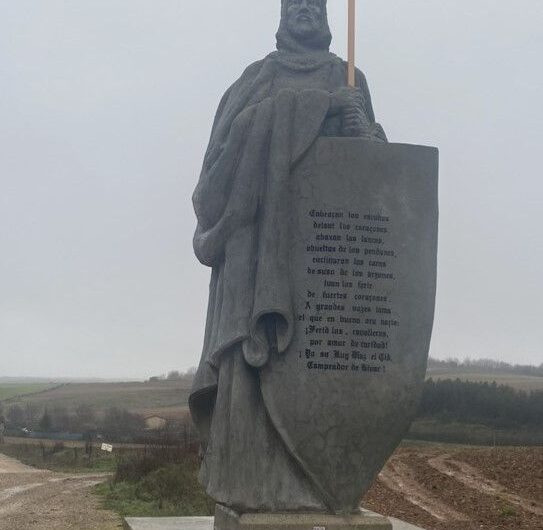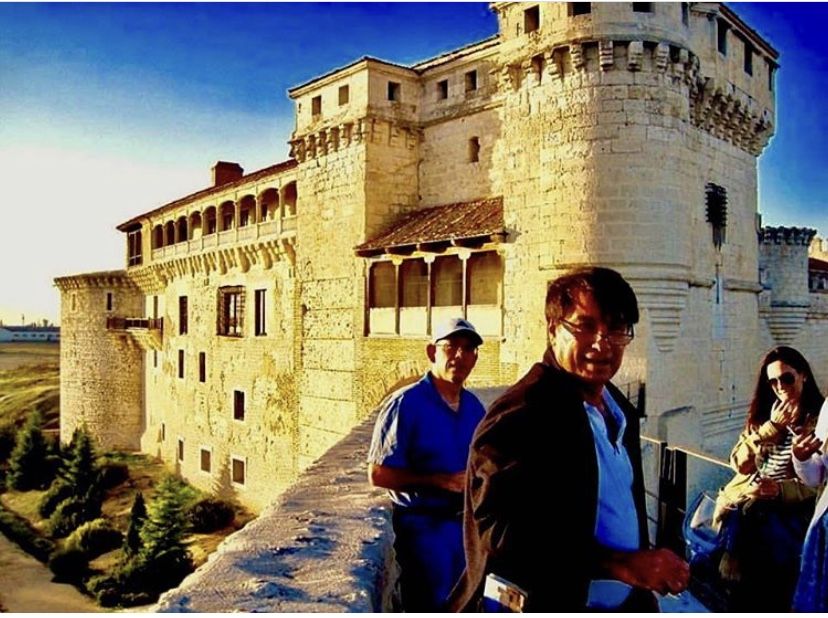Who was el Cid Campeador?
El Cid Campeador, whose real name was Rodrigo Díaz de Vivar, was a prominent warrior and military hero of medieval Spain. He was born around the year 1043 and died in 1099. He is a legendary figure in Spanish history, known for his military exploits during the Reconquista, a period in which the Christian kingdoms of the Iberian Peninsula fought to recover territories occupied by the Muslims.
The nickname “Campeador” means “one who fights in the vanguard” and was given to him because of his bravery and skills on the battlefield. El Cid served several Christian and Muslim kings during his lifetime, but is best known for his services to King Alfonso VI of León and Castile. However, he also had conflicts with this king, which led to his banishment on two occasions.
One of the Cid’s most famous exploits was his conquest and government of the city of Valencia, which became an independent fiefdom for some time. His figure has been idealized in literature and art, and he has been the protagonist of numerous works, such as the “Cantar del Mío Cid”, the most important epic poem in medieval Spanish literature.
El Cid is an emblematic figure in Spanish history and culture, and his legacy remains relevant today.
Visit Burgos, its cathedral and the tomb of El Cid with 1 glass of
wine in hand from Madrid (1 day)
Did the Cid Campeador lose a battle?
Yes, El Cid Campeador, like any military leader, experienced defeats on the battlefield throughout his life. Although he is widely remembered for his military successes, he also faced difficult times and lost battles.
One of the most notable moments in which El Cid suffered a significant defeat was at the Battle of Golpejera, which took place in 1072. Despite El Cid’s efforts, García’s forces were victorious and El Cid was captured. This event marked a period of difficulties for the Cid, including his subsequent banishment from Castile.
Despite this defeat, El Cid demonstrated his ability to recover from adversity. He continued to fight and eventually regained his position and prestige, becoming a legendary figure in Spanish history.
Did El Cid make King Alfonso VI swear that he had not killed his brother Sancho? Why?
Legend has it that the Cid Campeador made King Alfonso VI of León swear that he had not ordered or participated in the death of his brother, King Sancho of Castile. This occurred in the context of the suspicions surrounding Sancho’s death and the Cid’s exile.
El Cid, by swearing Alfonso VI, sought to protect his own honorability and legitimize his relationship with the king, ensuring that Alfonso was not directly involved in Sancho’s death. This act could also have served to maintain his position and prestige with the king, demonstrating his loyalty and trust in the monarch’s justice.
The story of the oath is part of the legend of the Cid Campeador and has not been able to be definitively confirmed historically. However, it is an element that has been widely disseminated in the literary and cultural tradition related to the figure of the Cid.
What is the song of Mio Cid? What is talked about in the song of Mio Cid?
The “Cantar de Mio Cid”, also known simply as “El Cantar del Cid”, is an anonymous medieval epic poem that narrates the exploits of the Spanish hero Rodrigo Díaz de Vivar, better known as the Cid Campeador. Composed in the 12th century, this poem is one of the most important literary works of medieval Spanish literature and one of the first expressions written in the Spanish language.
The Cantar del Mio Cid recounts the adventures and misadventures of the Cid from his exile from Castile to his restoration to the favor of King Alfonso VI. Among the events and themes addressed in the poem are:
- Banishment of the Cid: The poem begins with the unjust banishment of the Cid ordered by King Alfonso VI, who has been deceived by the Cid’s enemies.
- The exploits of the Cid in war: The battles and conquests of the Cid are described as he fights against the Muslims and other enemies of Castile.
- Family relationships: The Cid’s relationship with his wife Jimena and his daughters is shown, as well as the loyalty and support of his family during his exile.
- Honor and loyalty: The Cid’s code of honor and loyalty is highlighted, as well as his desire to restore his honor and reputation.
- Restoration of royal favor: As the poem progresses, El Cid manages to prove his worth and regain the favor of King Alfonso VI, who finally forgives him and restores him to his lands and titles.
In summary, the Cantar del Mio Cid is an epic tale that addresses themes such as honor, loyalty, justice and redemption, while narrating the adventures of the Cid in his quest to restore his honor and position in society.
By the way, Atapuerca is only 10 miles from Burgos. What is Atapuerca?
What to visit, what to do in Burgos Spain.



